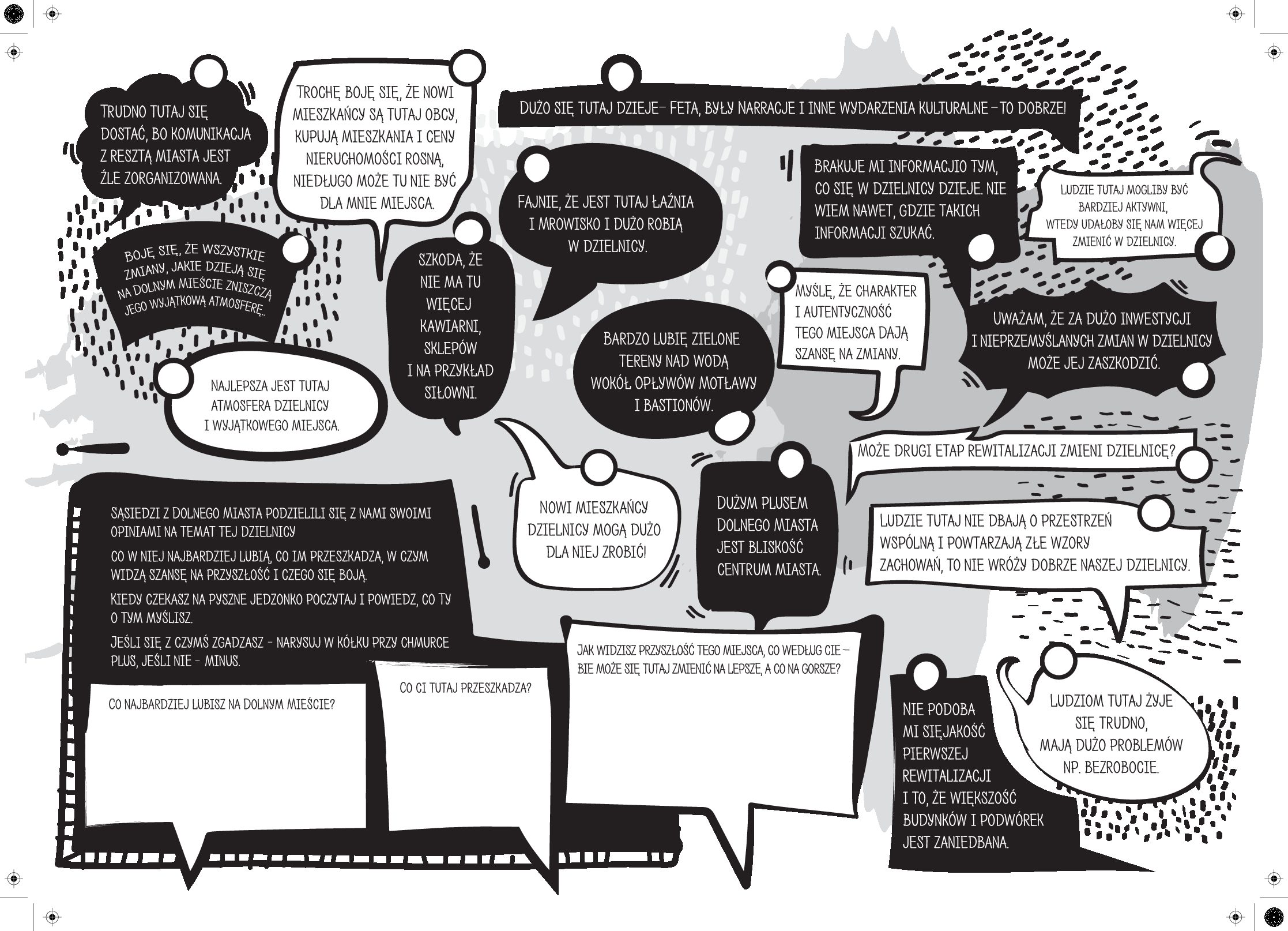 Tools and methods
Tools and methods
- Cultural planning phase Mapping
- Purpose Collecting the opinions of residents, analysing neighbourhood life
- Participants: Researchers, experts, residents
- Number of participants: 10–800
- Author
UrbCulturalPlanning ((Natalia Brylowska, graphic design by Julia Porańska)
Tools and methods
Café questionnaires
When it is useful
A questionnaire is a simple research tool that many people have encountered at least once in their lives. We are asked for opinions about services, events, we answer questions asked by sociologists or marketing specialists. Many people are already bored with the form of a paper questionnaire with tick-boxes. We are attacked by visually poor online surveys prepared by research agencies. Questionnaires about neighbourhood life can be difficult to implement. If we want to ask residents on the street about issues, this could be problematic and would require a group of interviewers. The survey used to map Gdańsk’s Dolne Miasto neighbourhood combined two research methods. During group interviews with local residents we talked about the good and bad sides of the place and its future potential, but also fears for the future. In order to check how common similar opinions and beliefs were among the residents, we designed a questionnaire in the form of a placemat distributed in local restaurants and cafés. People waiting to order could answer survey questions. We also made sure that the questionnaire itself was visually attractive and appealing, so that it would be of interest to respondents.

Step by step instruction
- Create a research questionnaire. Write a short invitation to the study to explain why you are conducting it. Ask simple questions, try to use language that is appropriate for your respondents. If you want, you can ask researchers and quantitative research experts for help.
- Develop graphics that will attract attention and distinguish your questionnaire from a ‘boring’ survey. You can use simple online tools like Canva or invite a professional graphic designer to help.
- Approach the owners of restaurants and cafés in your district and get their permission to conduct the survey. Provide them with printed questionnaires, it would be good to include pencils or pens.
- Collect the completed questionnaires regularly and replenish the supply. When you have collected enough responses (this will depend on the size of the neighbourhood/district you are analysing), you can finish the survey.
- Collect all questionnaires. Give each one an individual number by writing it on the corner of a sheet of paper, and check whether they are filled out correctly (sometimes a respondent may only answer one question, or the pad is used as a creative space for children).
- You will need Excel or Google Sheets to analyse the surveys. You will need to transfer the answers from each questionnaire into a spreadsheet - this will make it easier to count the results.
- Share the results of the survey with the neighbourhood and your team. This could be a social media post, an email to interested residents, or an infographic poster.

Downloadable materials

